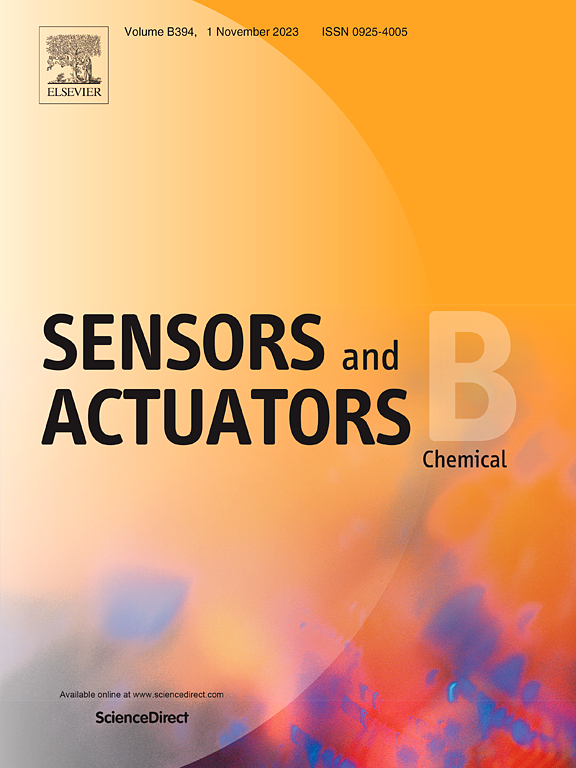A transistor array biosensor based on reduced graphene oxide prepared electrochemically for detection of multiplex circulating miRNAs of non-small cell lung cancer in human serum
IF 8
1区 化学
Q1 CHEMISTRY, ANALYTICAL
引用次数: 0
Abstract
The early diagnostic of non-small cell lung cancer (NSCLC) at an early stage can improve patient prognosis and patient survival rates. Here, a novel transistor-based array biosensor was developed for the multiplex detection of four miRNAs (miRNA 21, miRNA 486–5p, miRNA 155, and miRNA 205) as circulating miRNA biomarkers in NSCLC. The transistor channel was modified by a reduced graphene oxide (rGO) semiconductor layer that was prepared based on electrochemical reduction of graphene oxide (GO) through optimal condition. The rGO transistor exhibited excellent transistor performance and high stability, which provided enough guarantee for stable detection of biomarkers. Further, PAA/PEDOT film was modified on the surface of rGO layer in channel to improve selectivity, enhance signal response and provide coupling group. The capture DNA was coupled on the surface of PAA/PEDOT film to obtain H/PAA/PEDOT/rGO transistor, then the Y-shape nucleic acid structure was specifically designed to capture target miRNA. Finally, the H/PAA/PEDOT/rGO transistor array biosensor exhibited an excellent linearity for four miRNAs (miRNA 21, miRNA 486–5p, miRNA 155, and miRNA 205), with low detection limit 2.36 fM, had high selectivity, sensitivity and stability. Moreover, the biosensor also had reusability performance, which lowered the cost of biosensor and improved the feasibility of industrialization. These studies indicated that the novel H/PAA/PEDOT/rGO transistor biosensor array would have great promise for applications in early blood diagnosis and postoperative monitoring of NSCLC.

电化学制备了一种基于还原氧化石墨烯的晶体管阵列生物传感器,用于检测人血清中非小细胞肺癌的多重循环mirna
非小细胞肺癌(NSCLC)的早期诊断可以改善患者的预后和生存率。本研究开发了一种新型晶体管阵列生物传感器,用于多重检测四种miRNA (miRNA 21、miRNA 486-5p、miRNA 155和miRNA 205)作为非小细胞肺癌循环miRNA生物标志物。在电化学还原氧化石墨烯的基础上,通过优化条件制备了还原氧化石墨烯(rGO)半导体层,对晶体管沟道进行了修饰。rGO晶体管具有优异的晶体管性能和高的稳定性,为生物标志物的稳定检测提供了足够的保证。进一步,在通道中还原氧化石墨烯层表面修饰PAA/PEDOT膜,提高选择性,增强信号响应,提供耦合基团。将捕获的DNA偶联在PAA/PEDOT膜表面得到H/PAA/PEDOT/rGO晶体管,然后专门设计y形核酸结构捕获目标miRNA。最后,H/PAA/PEDOT/rGO晶体管阵列生物传感器对4种miRNA (miRNA 21、miRNA 486-5p、miRNA 155和miRNA 205)具有良好的线性,检出限2.36 fM,具有较高的选择性、灵敏度和稳定性。此外,该生物传感器还具有可重复使用的性能,降低了生物传感器的成本,提高了产业化的可行性。这些研究表明,新型H/PAA/PEDOT/rGO晶体管生物传感器阵列在NSCLC的早期血液诊断和术后监测方面具有很大的应用前景。
本文章由计算机程序翻译,如有差异,请以英文原文为准。
求助全文
约1分钟内获得全文
求助全文
来源期刊

Sensors and Actuators B: Chemical
工程技术-电化学
CiteScore
14.60
自引率
11.90%
发文量
1776
审稿时长
3.2 months
期刊介绍:
Sensors & Actuators, B: Chemical is an international journal focused on the research and development of chemical transducers. It covers chemical sensors and biosensors, chemical actuators, and analytical microsystems. The journal is interdisciplinary, aiming to publish original works showcasing substantial advancements beyond the current state of the art in these fields, with practical applicability to solving meaningful analytical problems. Review articles are accepted by invitation from an Editor of the journal.
 求助内容:
求助内容: 应助结果提醒方式:
应助结果提醒方式:


